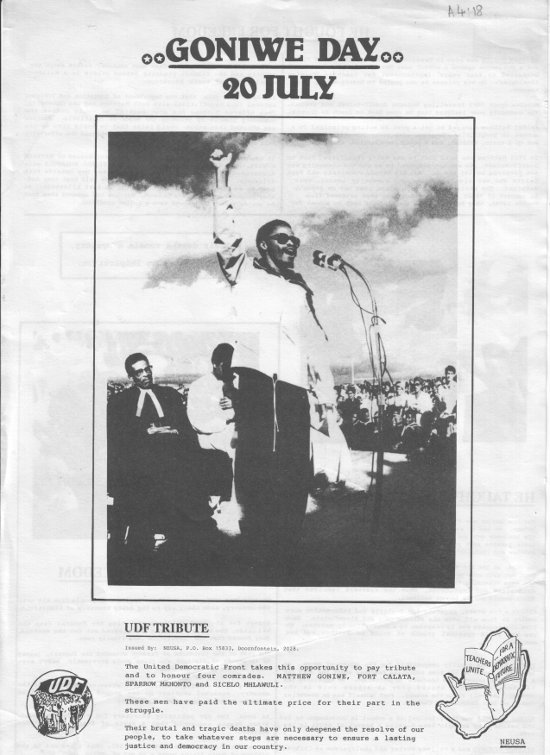 The Soweto Uprising had radicalised the youth. The death of Steve Biko had aroused their anger even further. The apartheid state was determined to crush any kind of resistance and responded with a brutal crackdown. Black consciousness was the state’s first target.
The Soweto Uprising had radicalised the youth. The death of Steve Biko had aroused their anger even further. The apartheid state was determined to crush any kind of resistance and responded with a brutal crackdown. Black consciousness was the state’s first target.
In October 1977, a month after the death of Steve Biko, the government declared 18 opposition organisations unlawful, and arrested 70 of their leaders. They hoped to destroy organisations by depriving them of leadership. Many people were banned and all newspapers that were critical of the government were shut down. The apartheid state took extreme measures to stamp out any opposition.
In the 1960s, the government had already put in place a number of legal measures to crush resistance. These included:
- The General Laws Amendment Act (1963), which gave the government the right to detain people for 90 days. This was now extended to 180 days of detention without trial.
- The Terrorism Act (1967) expanded the definition of what constituted a danger to the state and allowed for the death penalty for those found guilty.
The government also established a number of secret organisations intended to coordinate intelligence and security.
- The Bureau of State Security (BOSS) coordinated the activities of the Security Police and military intelligence in the Defence Force.
- The State Security Council (SSC), which was headed by the Prime Minister, later President, established an intelligence network throughout the country, which was able to uncover resistance to the state.
From 1977 onwards, the government unleashed the full force of its security apparatus. People were detained for long periods of time, others died in detention as a result of intensive interrogation. Others disappeared and were murdered by members of the security police much like the Cradock Four.Their bodies were left on the side of the road, mutilated and burned.
These repressive measures did have an impact on resistance. There was a winding down of youth resistance for a period. But this was also due to the arrests of youth leadership and the move into exile of many of the participants in the Soweto uprising. However, the anger of the youth would not be silenced for long.
Exhibitions in the classroom
Reading the past
Read the article on Matthew Goniwe and the Cradock Four and answer the following questions:
- This source was created by the UDF as a tribute to Goniwe and the Cradock Four. Does this affect the reliability of the information contained in this source? Explain your answer.
- In what context did the murder of the Cradock Four take place?
- From the source, what can you discover about the role of Matthew Goniwe in opposition politics?
- Look at how much information is given to Goniwe and how much to the other three men who died? Do you think is fair or does it reflect any bias? Explain your answer.



